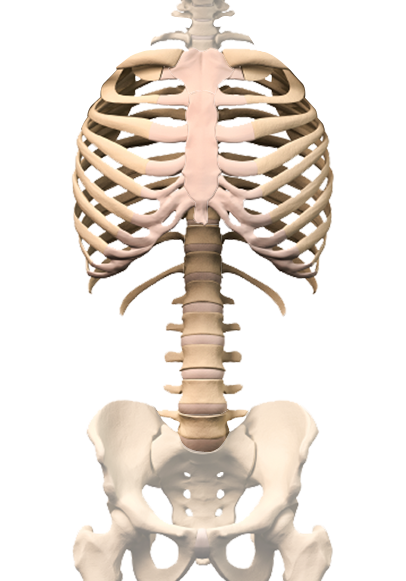Sternum
Three divisions of the sternum:
- Manubrium
- Body
- Xiphoid process
The manubrium is the upper portion of the sternum. The clavicle or collar bone and the first two ribs are attached to this part of the sternum.
The body of the sternum is the middle part and is also known as the gladiolus or blade. The third up to the seventh pair of the ribs are directly connected to the body. The other ribs, particularly the 8th through 10th ribs (false ribs), are indirectly connected to the body of the sternum as they are attached to the 7th ribs instead.
Functions and Clinical Importance of the Sternum
As mentioned previously, the ribs are attached to the sternum, which forms the ribcage. Remember that beneath the ribcage are several vital organs including the heart, lungs, blood vessels and even portions of the stomach, kidneys and spleen. This clearly implies that the sternum together with the ribs have significant protective function.
Moreover, when performing the cardiopulmonary resuscitation (CPR), the sternum is also an important body landmark. First aid providers do the chest compression right through the body of the sternum.
On the other hand, the xiphoid process must be avoided to be compressed during the CPR as it might get fractured resulting to a more dangerous condition. The worst is that the fractured chest bone may puncture the heart.
Report Error



